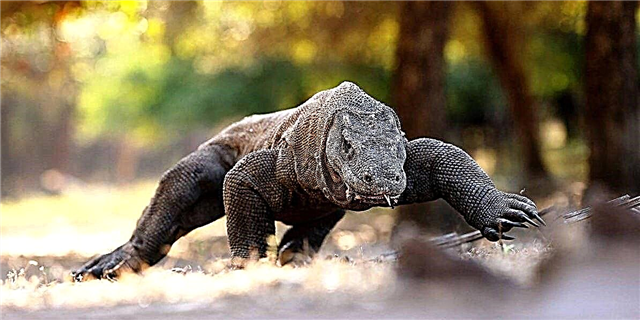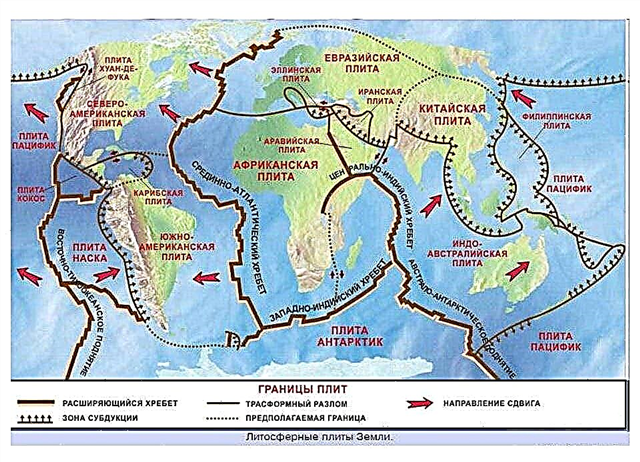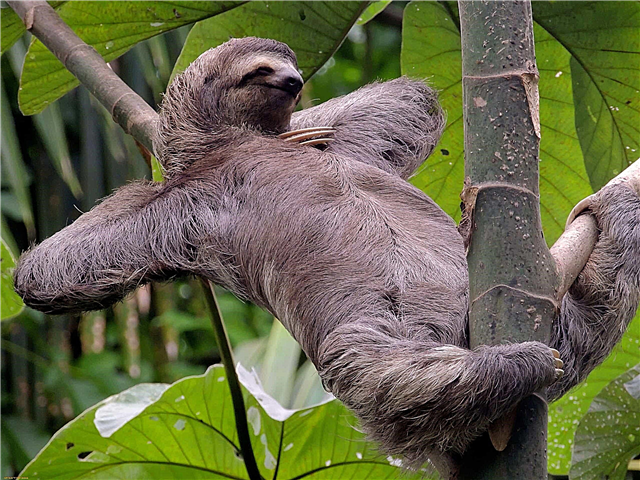
The largest and heaviest dinosaurs that lived in the Mesozoic era (252-66 million. Sauropods fed on vegetation; with the help of a long neck, which was balanced by a massive tail, they reached the upper branches of trees and tilted their heads to the ground to drink water without moving huge bodies.
The average weight of sauropods was 15–20 tons, but dinosaurs from the group of titanosaurs that lived in the Jurassic and Cretaceous periods (171–66 million years ago) grew to gigantic sizes - up to 70 tons and more. Find out which dinosaurs are on the list of TOP 5 largest dinosaurs.
Fifth place - Apatosaurus or Brontosaurus (Apatosaurus)

Apatosaurus is a genus of giant lizardotazovy sauropods that lived in North America in the Late Jurassic, 157-146 million years ago. Apatosaurus is a member of the Diplodocidae family, which includes the longest dinosaurs, including the diplodocus, super dinosaur and barosaurus. "Apatosaurus" in Greek means "deceptive lizard", because its fossils are similar to the remains of other sauropods. Apatosaurus is also known as the "Brontosaurus".
Apatosaurus was a massive herbivorous dinosaur, which reached a length of 22-28 m, up to 5 m in height and weighed 33-72 tons. He had four powerful massive legs, a long tail, a neck and a small skull in relation to body size. The tail is long and thin, as the vertebrae of the spine narrowed sharply from the hips.
The Brontosaurs lived near the banks of the rivers, where they found water and vegetation.They fed mainly on stunted plants, but with the help of a long flexible neck they reached tall branches of trees. Coggy teeth did not allow them to chew food, so they swallowed it (about 400 kg every day).
Fourth place - Mamenchisaurus

Mamenchisaurus is a genus of sauropods from the Mamenchisauridae family, who lived in China from 160 to 145 million years ago, in the late Jurassic period. "Mamenchisaurus" means "lizard from Mamensi" (from the Greek. Saurus - lizard). The long muscular neck of the mamenchisaurus was half the entire length of the body; its skeleton contained 19 cervical vertebrae, more than other dinosaurs. This Asian sauropod had spade-shaped teeth suitable for chewing on coarse plant material, including seed ferns, thrills, mosses and horsetails. Mamenchisaurus consumed about 500 kg of food per day.
The genus mamenchisaurus includes 6 species: M. constructus, M. hochuanensis, M. sinocanadorum, M. youngi, M. anyuensis, M. jingyanensis, M. yunnanensis. The largest species M. sinocanadorum reached 35 m in length with a long neck of 17 m. And weighed from 50 to 75 tons.
Third Place - Puertasaurus

Puertasaurus is a genus of titanosaurs from southern Patagonia (Argentina) that existed between 100 and 94 million. The only species of this genus, Puertasaurus reuili, belongs to the clade of Lognkosaurs (Lognkosauria) - a group of giant dinosaur sauropods that lived during the Upper (Late) Cretaceous in South America . Puertasaurs have a wide chest (5-8 m.), Which made them the most voluminous dinosaurs. They had a thick flexible neck, with the help of which they bent to reach the high branches of trees, without moving with their whole bodies.
Puertasaurus had spikes on its back that protruded on its sides. Paleontologists estimate the length of this lizard at 35-40 m, and weight 80-100 tons. Later estimates show 30 m.in length and weight 60-70 tons.
Second Place - Patagotitan

Patagotitan is a massive long-necked titanosaurus that lived during the Late Cretaceous, between 100 and 95 million years ago in Patagonia, Argentina. This territory was a wooded area with large conifers, flowering plants, ferns and winding rivers.
This genus of sauropods belongs to the treasure Lognkosauria and contains a single species - Patagotitan mayorum. The scientific name of the species means "titanium from Patagonia"; the word "majorum" is given in honor of the Mayo family - the owners of the farm, where the fossils of this huge lizard are excavated.
Patagotitan, weighing 70 tons, which is heavier than 10 adult African elephants, is considered the largest species of titanosaurs. It was 37 m long and 6 m in height to the shoulder. Patagotitans lived in a warm climate on the plains and used lakes as a watering hole.
The largest dinosaur - Argentinosaurus (Argentinosaurus)

The heaviest and longest terrestrial animal is the Argentinosaurus - a giant titanosaurus that lived in Argentina from 97 to 93.5 million years ago, in the Upper Cretaceous era. Like Puertasaurus and Patagotitin, Argentinosaurus is part of the Lognkosauria group. The name of the genus translates as "Argentine lizard." Its size reached from 35 to 40 m in length, 7.3 m in height to the shoulder and weighed 80-100 tons.
The Argentinosaurus, like all sauropods, is a herbivore lizard. He used his long neck to reach tall trees or touch the ground in search of ferns and bushes. This lizard traveled in herds of dozens of individuals.He was hunted by a predator giganotosaurus in groups (6 or more). The Argentinosaurus developed a speed of up to 8 km / h.
Despite the huge size, females laid eggs with a diameter of 22 cmtherefore, young individuals after birth had to grow for a long time to reach adult size (15–40 years).
Sauropods are known that exceeded the mass and length of the Argentinosaurus (breviparop, bruhatkayosaurus, seismosaurus, amphicelia), but their skeletons were not found completely, but only partially. Therefore, the size and even the very existence of these dinosaurs is doubtful.
Thus, sauropods, the largest four-legged herbivorous dinosaurs and the largest land animals in the history of the Earth, are included in the list of the TOP 5 largest dinosaurs in the world. 5th and 4th places are occupied by the apatosaurus and mamenchisaurus, who lived in the late Jurassic period. The leaders are the giant titanosaurs that live in South America during the Upper Cretaceous era - Puertasaurus, Patagotitan and Argentinosaurus, the first in this rating.












